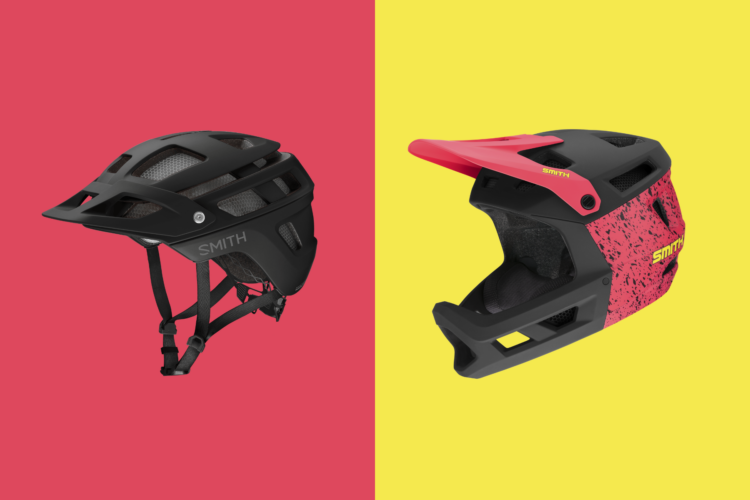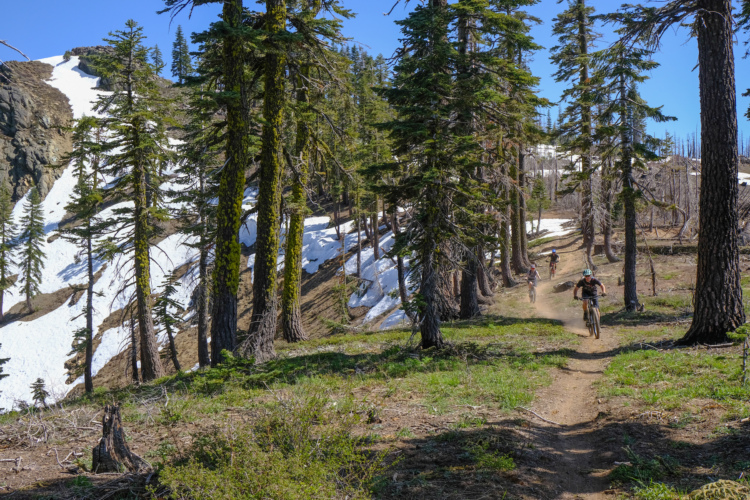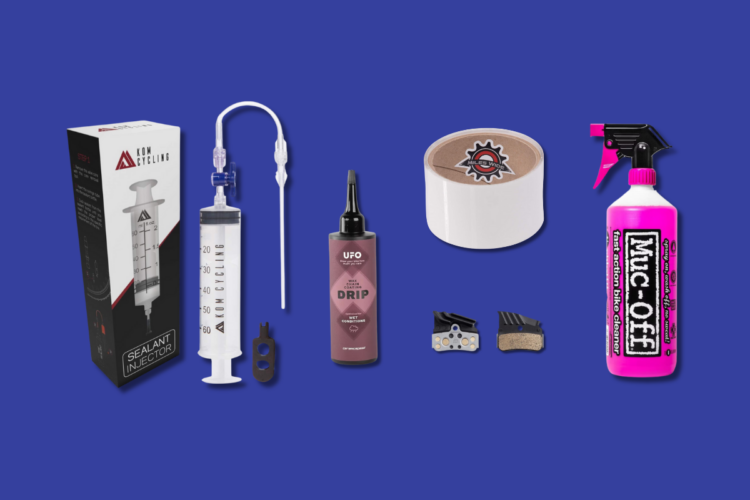
Following years of drought, the summer is thankfully off to a damp start in much of the western USA, with rain and snowmelt beginning to quench severely parched ground from Colorado to California. As mountain bikers, we know that riding wet trails can lead to damage so we generally avoid riding them. But what about when conditions are very dry — can riding dry trails be bad too?
Aeolian erosion
Trail builders are mostly focused on mitigating erosion caused by water, though erosion faciliated by wind — known as aeolian erosion — is another factor to consider. Trail building professional and educator Tony Boone says based on his own observations, wheeled vehicles like mountain bikes probably contribute to aeolian erosion.
“Do wheeled vehicles kick up more dust than somebody walking? Sure, just visually [it’s obvious], but I’m not a scientist,” he said. “It depends on the conditions of the soil. You can’t really say that mountain bikes cause more aeolian erosion [than hikers] but visually it creates a loss of ‘moon dust’ as it settles elsewhere.”
A loss of soil, whether it’s from water or a bike tire kicking up dust, ultimately degrades the trail surface, and in particularly dry conditions it may occur more rapidly. And as the dust re-settles it can have negative effects, from coating vegetation and reducing plants’ ability to photosynthesize to depositing fine sediment in nearby aquatic habitats. Not to mention some dust can be hazardous to riders’ health. Boone points out that soils contain various levels of silicates, which when inhaled in high doses over time can cause silicosis, which the American Lung Association says can lead to lung scaring.
Dust isn’t great for bikes either because fine particles can make their way inside suspension and drivetrain components, leading to premature wear. And riding at the back of a group in particularly dusty conditions usually means poor visibility and handling.
Fragile soils
In areas with sensitive cryptobiotic soils, riding in dry conditions can cause even more damage than riding when the soil is wet. Cryptobiotic soils contain tiny living organisms like algae and fungi, and according to the US National Park Service (NPS), “cryptobiotic soil crusts are quite fragile, especially during the drier seasons [emphasis added].” The organization explains, “small amounts of pressure will break through the crust and expose the loose sand or soil beneath to the forces of erosion. As a result, humans can have a major impact on these delicate crusts.”
In very dry environments the NPS says it could take decades or even several hundred years for the living organisms to recover from compaction. Staying on trail and sticking to established lines helps riders avoid damaging cryptobiotic soils, though as every rider knows going off trail may be unavoidable at times. In particularly dry conditions, riders might want to consider avoiding these areas altogether just to be safe.
A lot of sand and fine particulate soil is naturally occurring, and would exist with or without mountain bikers riding in the area. Boone says trail builders try to avoid areas with loose soil anyway, though that’s not always possible.
“If you can’t avoid those areas you can dig a borrow pit and get to a different particle size,” he said. “In Moab you’ve got those sand pits between the slickrock, and you can armor them. Then at least that way people have a solid surface to ride on.”
Dry trail closures
Boone says he isn’t aware of any land agencies that have closed trails due to overly dry conditions, though he notes that doesn’t mean it hasn’t happened. The USFS is known to close certain areas due to the risk of forest fire, though not directly because of dry soils.
So is riding extremely dry trails a major faux pas like spinning tires on wet, muddy trails? Boone says he considers things case by case, taking into account multiple factors like whether it’s windy or not.
Ultimately it seems it’s up to individual riders to make responsible decisions that avoid damaging the trails for others. By educating ourselves about how trails work we can ensure that we’re being good stewards in any conditions.

















13 Comments
Jun 26, 2023
Down here on the Mendocino Coast, we see trails lasting into the early fall months without a problem. More moisture for sure. Fortunately, we are an area where trail maintenance is a regular occurrence (once a month+). Mendocino Coast Cyclist is a great group as well.
Jun 27, 2023
Jun 29, 2023
I do work trails "officially" during work days and "unofficially" during my rides often. Oak Mountain State Park where I primarily ride allows riding in the evening on Tuesdays and Thursdays only. Sometimes those days, both those days in the same week, get rain. Historically Birmingham has on average 117 days of rain per year. That nearly once every three days for you math geniuses.
There are some trails that we must avoid on those days because it will be a muddy mess and destroy those trails. Others, however, have different surface types and drain much better so we do ride those.
Jun 26, 2023
I've ridden in Rotorua 8 days straight in the rain with the biggest trail builders in that area...same with places in the Mid-Atlantic.
It's irresponsible to ride any trail in any condition if it's damaging the trail. That's the story/headline.
Riding trails in the west can be a blast. Have fun doing it if the trails are holding and you are not creating ruts that will stay in form when they dry.
Real dry...enh...come on.
Jun 27, 2023
Jun 27, 2023
People hear this myth, than spread it. Man riding wet can be so good for skills and for fun.
I'll retract my inaccurate description, because I do think you note there is soil dependency at play...but I wish the slant was "obey trail builders' desires" rather than riding wet trails is bad.
Jun 26, 2023
Jun 29, 2023
Don't ride when the trail is too dry.
Just buy a Peloton and watch videos of the desert and rain forest while you ride inside!
Jun 29, 2023
From an environmental angle....... if the dust blows away, the trail hardens and, hopefully, becomes stable. As noted, this can be helped with various types of armor. Maintaining the trail aggressively -- and staying off the rest, is part of our existential covenant.
From a management perspective.......Summer is hot and often dry. Trying to come up with guidelines (and regulations) to decide when to close a trail for dryness sounds like a major nightmare.
Maybe we just have to accept that many popular trails will have to be hardened if they are going to stay rideable.............?
Jun 29, 2023
Jun 26, 2023
Jun 27, 2023
Jun 26, 2023